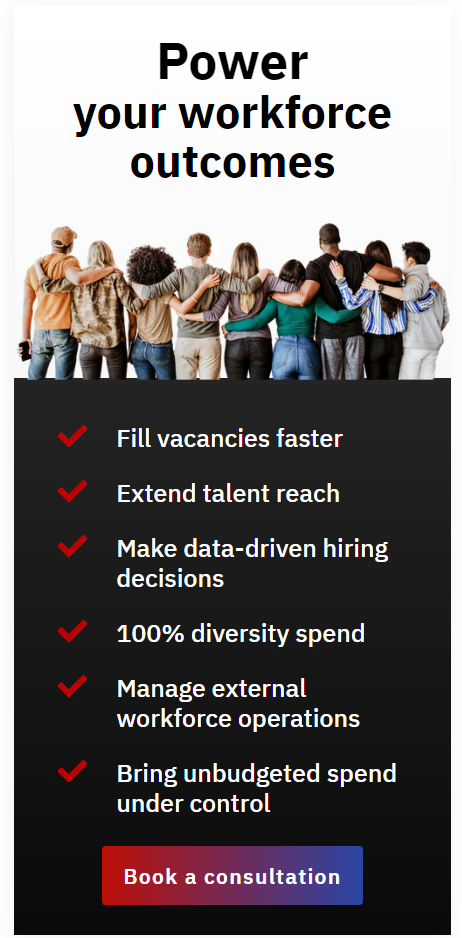Back to the office and a new way of working
As things settle down and all of us start adjusting to the ‘new’ normal, HR and Talent Acquisition metrics will now need to be reconsidered. While the metrics themselves might not change dramatically, their impact definitely will. As remote working becomes the new norm, it will be interesting to see the impact on the business objectives of an organization.
It can be quite a boon for those workers who prefer to work by themselves and are comfortable in working in rather personal environments. Of course, the same circumstances can wreak havoc on those who love interacting and working closely with people.
Most Managed Service Providers (MSPs), share a plethora of metrics: onboarding time, number of resumes submitted by the suppliers per requisition, and so on. That is one distinct advantage of using a Vendor Management System (VMS), as almost all the processes can be measured. This helps any firm tactically, identifying bottlenecks in the processes and ranking the suppliers, using their scorecards.
An MSP also has a unique advantage in the talent acquisition space as the Program Management Office (PMO) has access to metrics via the VMS, market intelligence via tools like Gartner’s Talent Neuron, a relationship with the hiring managers and the suppliers, plus survey feedback from the different stakeholders and is aware of the day to day issues that the client faces internally.
The value an MSP brings
A well-managed MSP program is in a great position to be able to take a call on the current client situation and relate that to the current hiring environment. The MSP is aware of the challenges that the client faces internally in terms of the different hiring habits of managers, feedback from the contractors, the kind of projects that the contractors are working on, and whether they find them exciting and challenging. The PMO is aware of the causation of candidates dropping out, or contractors not completing assignments. They are also in a position to be able to differentiate between causation and correlation.
When suppliers fall short of being able to meet requirements, it can result in shadow or downstream costs that lie beyond the view of procurement when negotiating the initial purchase price and contract terms that do not incorporate a life cycle total cost of ownership perspective. Every requisition shouldn’t be treated equally nor should more time be spent on the oldest requisitions or those of the loudest hiring managers. Instead, the function should focus on over-investing in the attraction and selection of the talent that is most valuable to the business.
So, what can organizations do to start the process?
Instead of trying to measure the quality of hire for all employees across the organization, a reasonable first step is to begin measuring a segment of the organization that drives the greatest business value. Until very recently, the most critical jobs would be tied to revenue. But our thinking has evolved —and we’re connecting those jobs’ intellectual capital, not just revenue. There is a nuance in figuring out where to invest, that the MSP can provide.
The MSP has the advantage of being in the unique position of dealing with the various talent acquisition functions and not being affected by the internal organizational dynamics. This allows the MSP program to be able to “correlate” the talent acquisition functioning and the “causation” of the same dynamics.
Adopting a holistic view of talent performance
With a firm handle on these two critical success factors, the PMO can then predict the availability, cost, and time required to hire contingent talent. If the PMO’s advice is taken into consideration while the organization’s strategy is being planned, the CXO suite of a firm can then utilize this information. Based on my experience, it is very few firms globally that are taking the availability of full-time and contingent talent into consideration.
Metrics along with market intelligence only give a part of the view. The brand value of the client in the contingent talent community, the kind of projects being offered, benefits for contractors, and opportunities for the contractors to upskill are just some of the factors that affect the ability of an organization to attract talent. The combination of the day-to-day operations, metrics, and access to information plus the stakeholder interaction gives the MSP a holistic view of the situation and allows for effective prediction of the contingent talent acquisition, hence its impact and the competitive advantage it can offer an organization.
The new workforce paradigm
With the changing work environment today, the expectations of the talent have to be met, especially with the paradigm shift: the organization’s engine of innovation and delivery moving from the office to remote locations. As the work environment changes and evolves, organizations will have to do the same in order just to stay competitive. We are still in a transition phase, and in due course will find out how best the new world of work will be: do we all go back to the office, or do we get to work from home. My guess is that it will be somewhere in the middle and organizations that are not innovative and mature and do not plan on being so, might favor the remote work model, and we will find that the organization with an innovative bent of mind: will prefer that their workforces return to the office.
As organizations adapt and learn to maneuver in the new world of work, contingent workers offer a distinct advantage: allowing for scale, rapid deployment, and a workforce ready to deliver quickly upon joining.
Summary
To maximize the value of the contingent workforce, leadership should to plan and implement its Contingent Workforce Strategy working closely with their MSP. The contingent workforce model is the future of work and unless firms learn to use it as a competitive advantage, they will be at the risk of being left behind.

Ian Tomlin
Author

